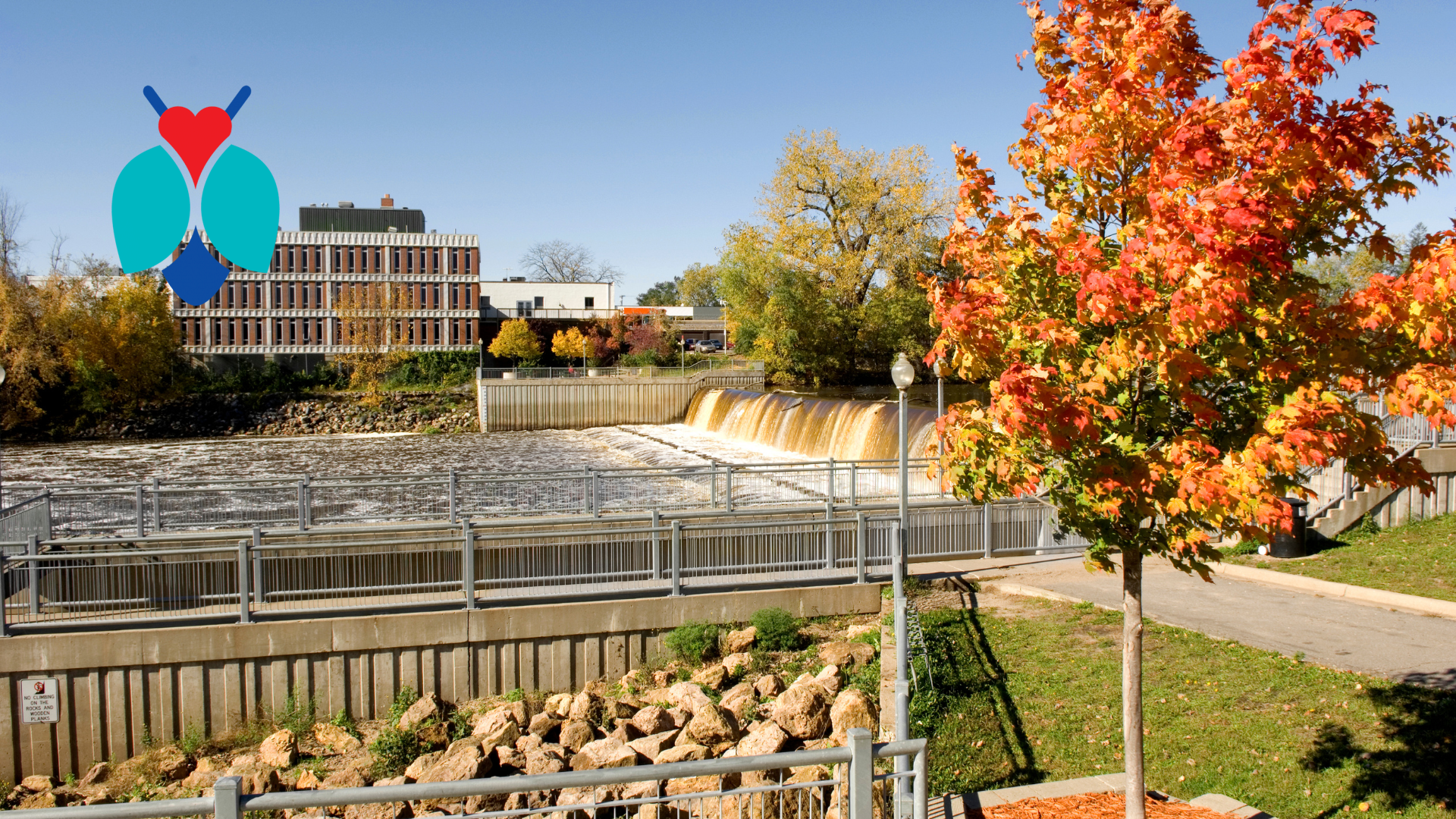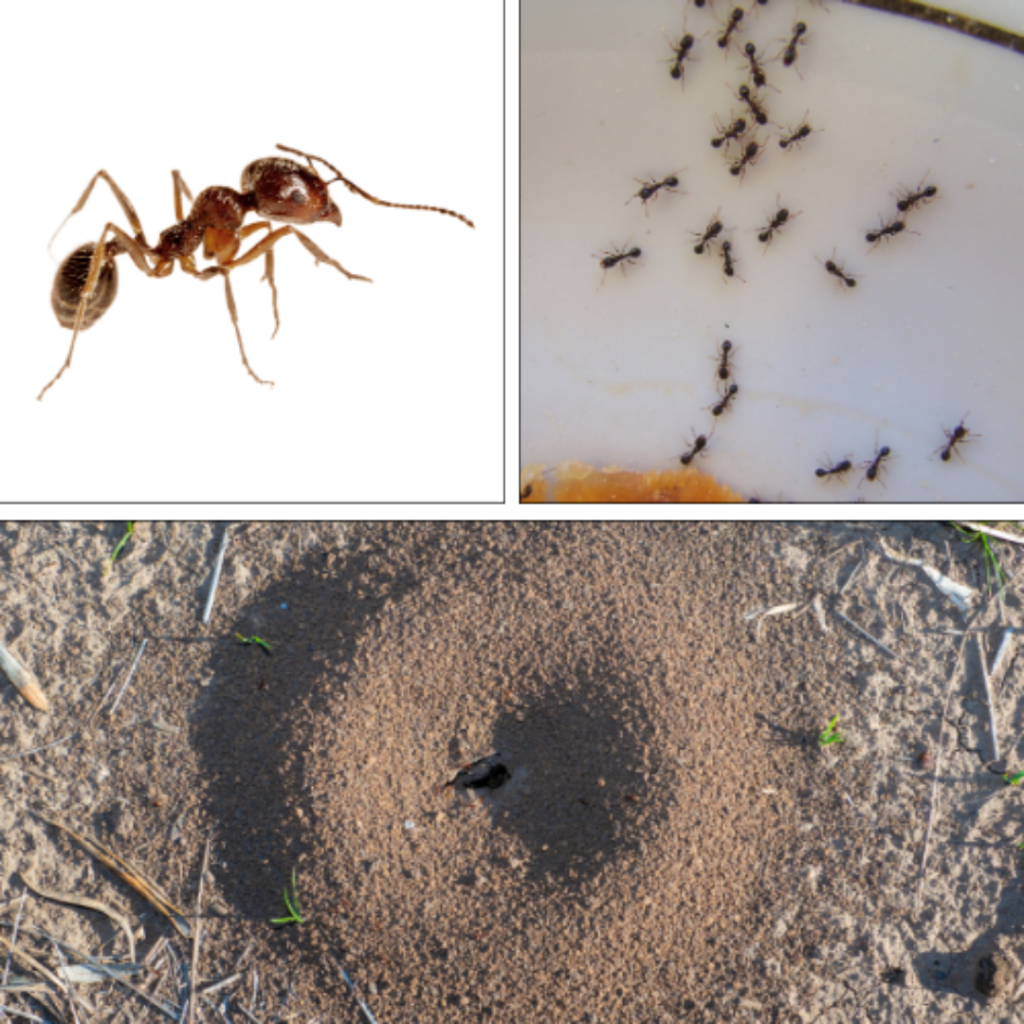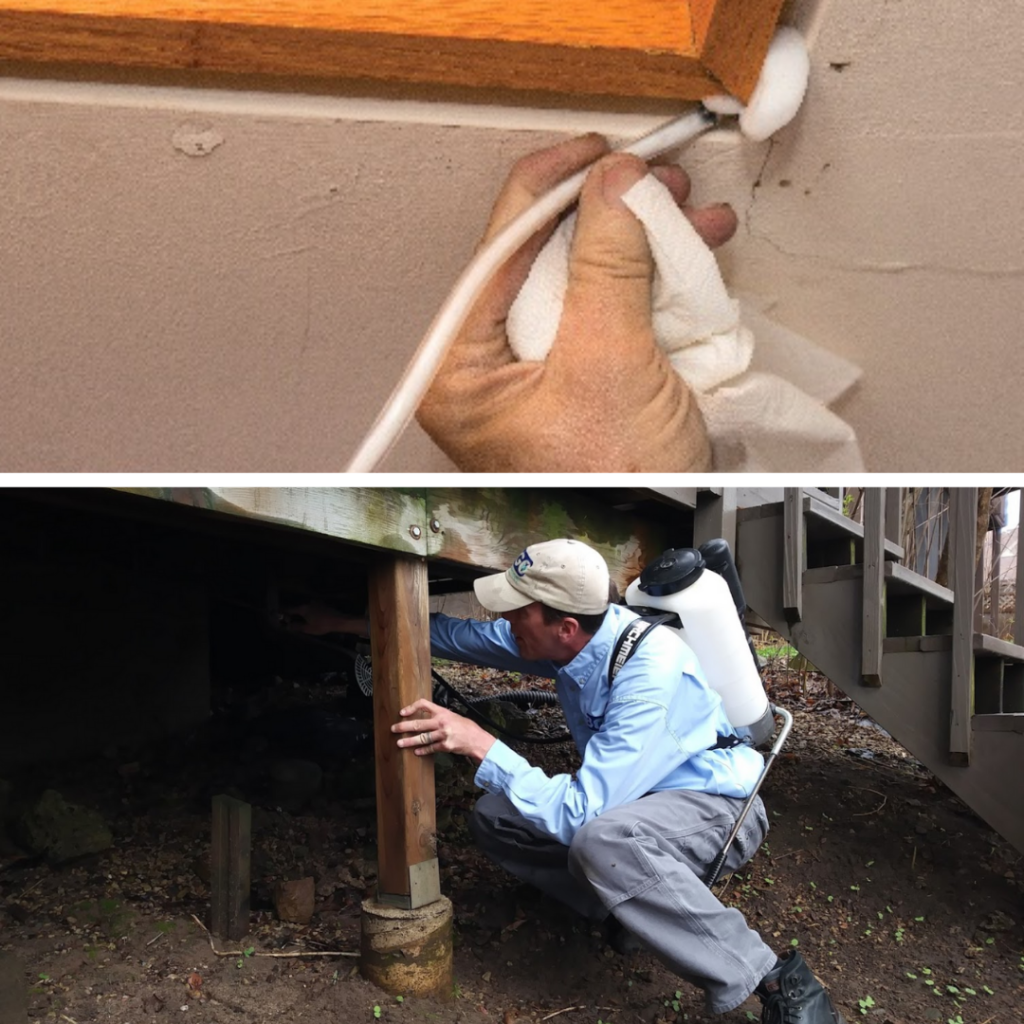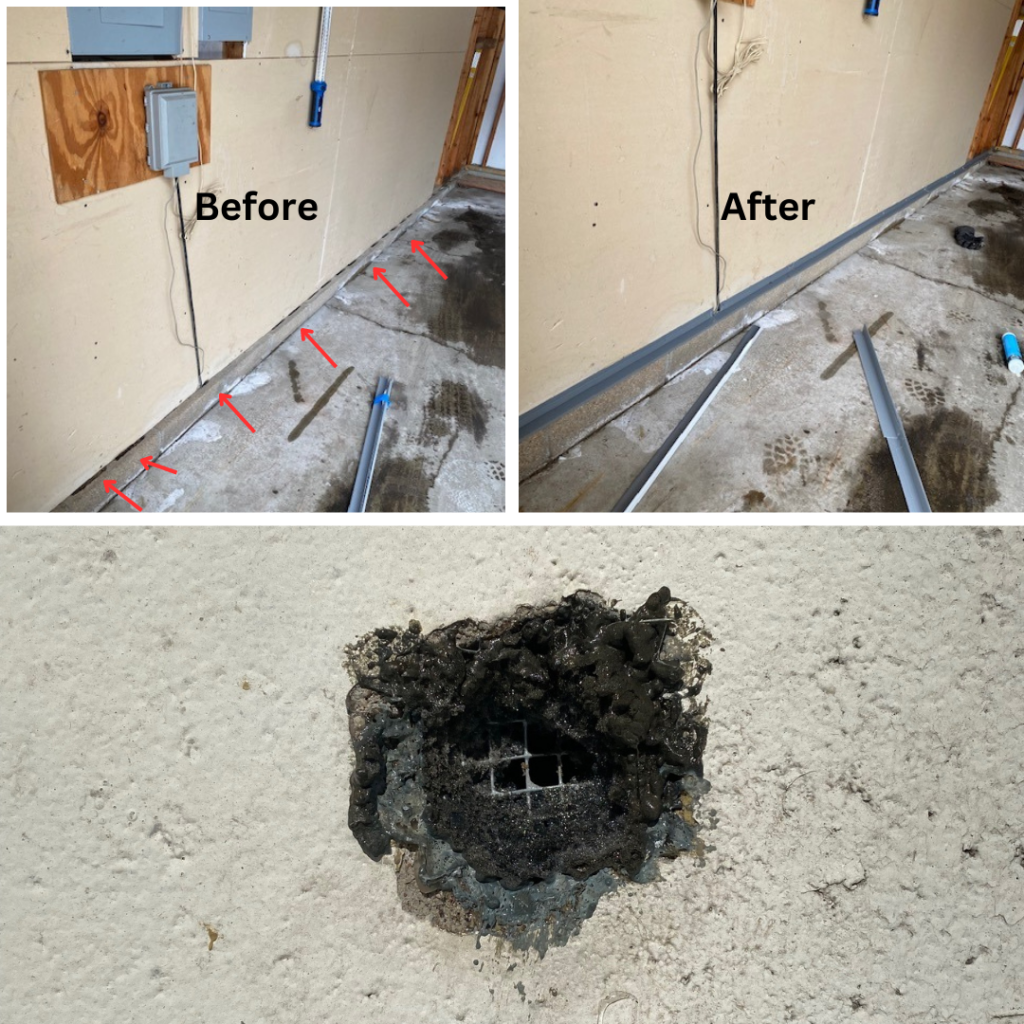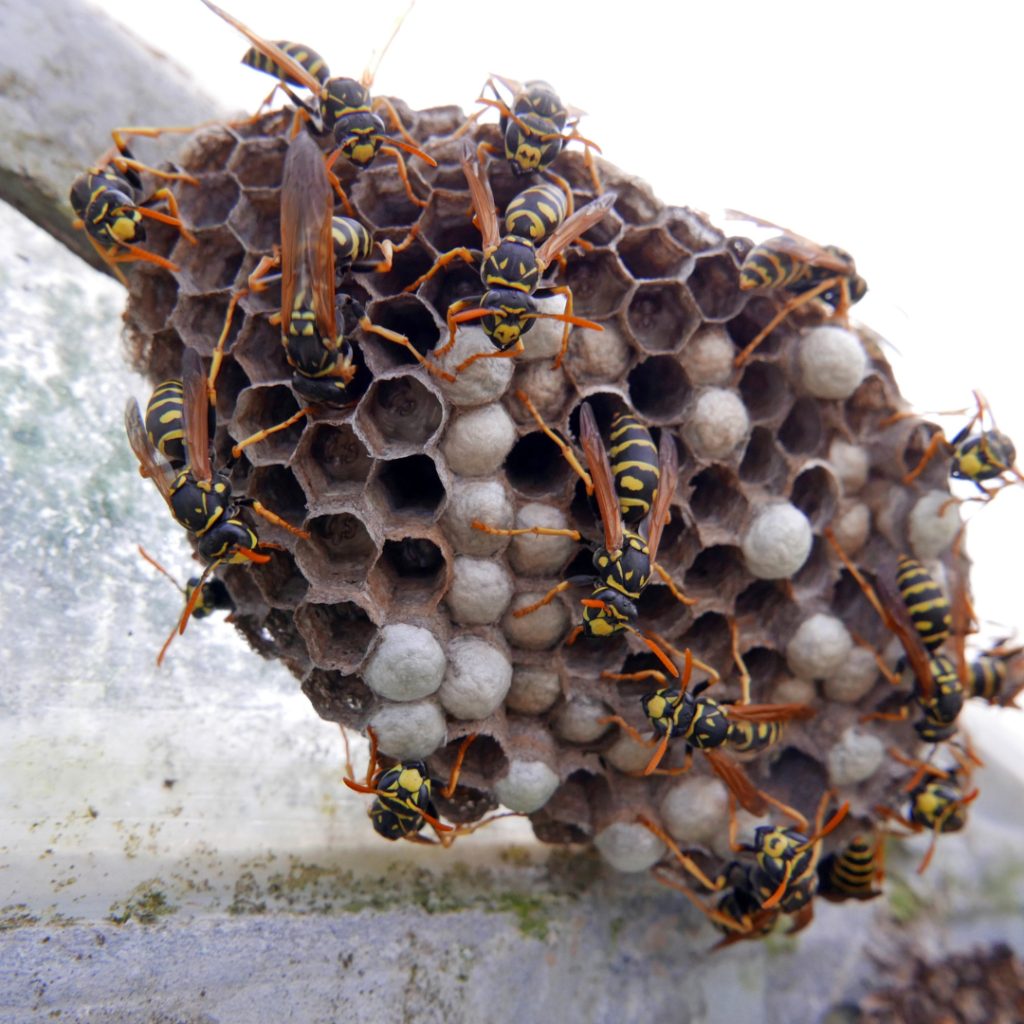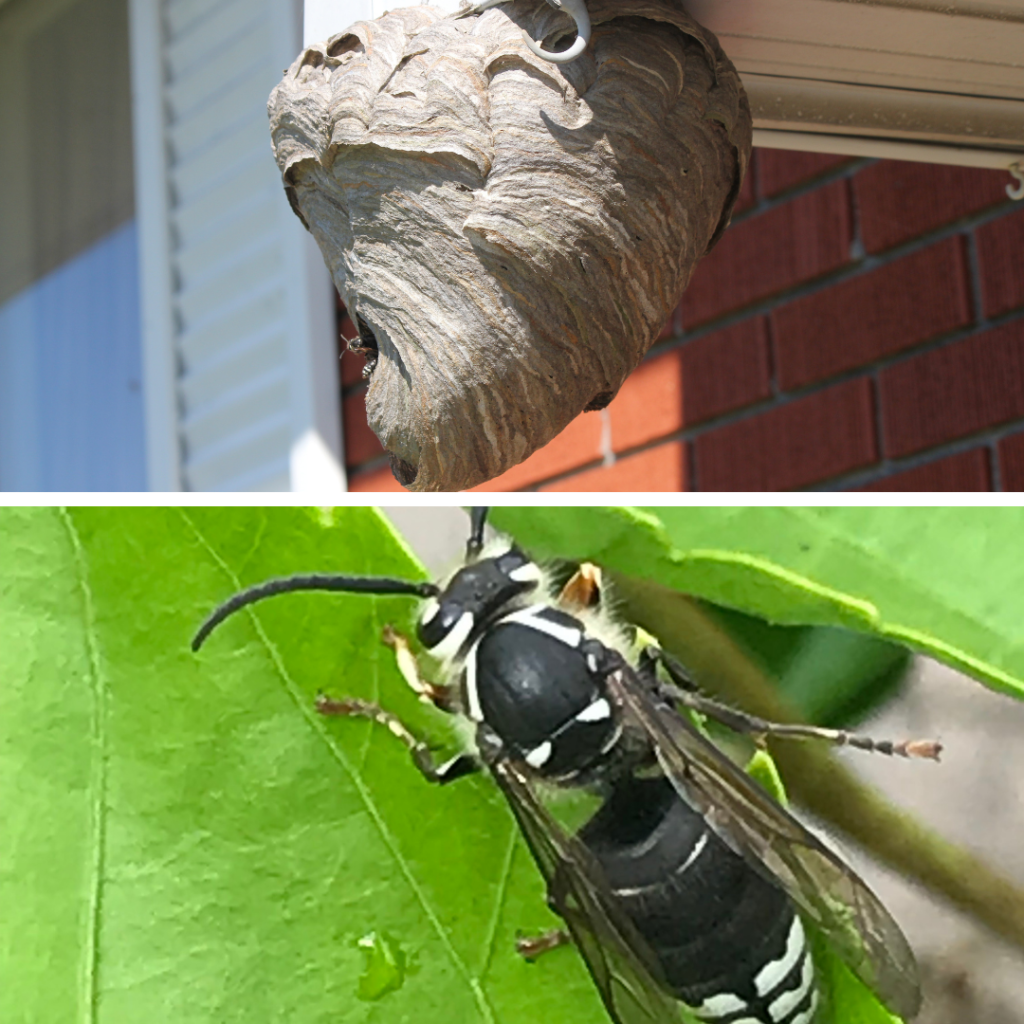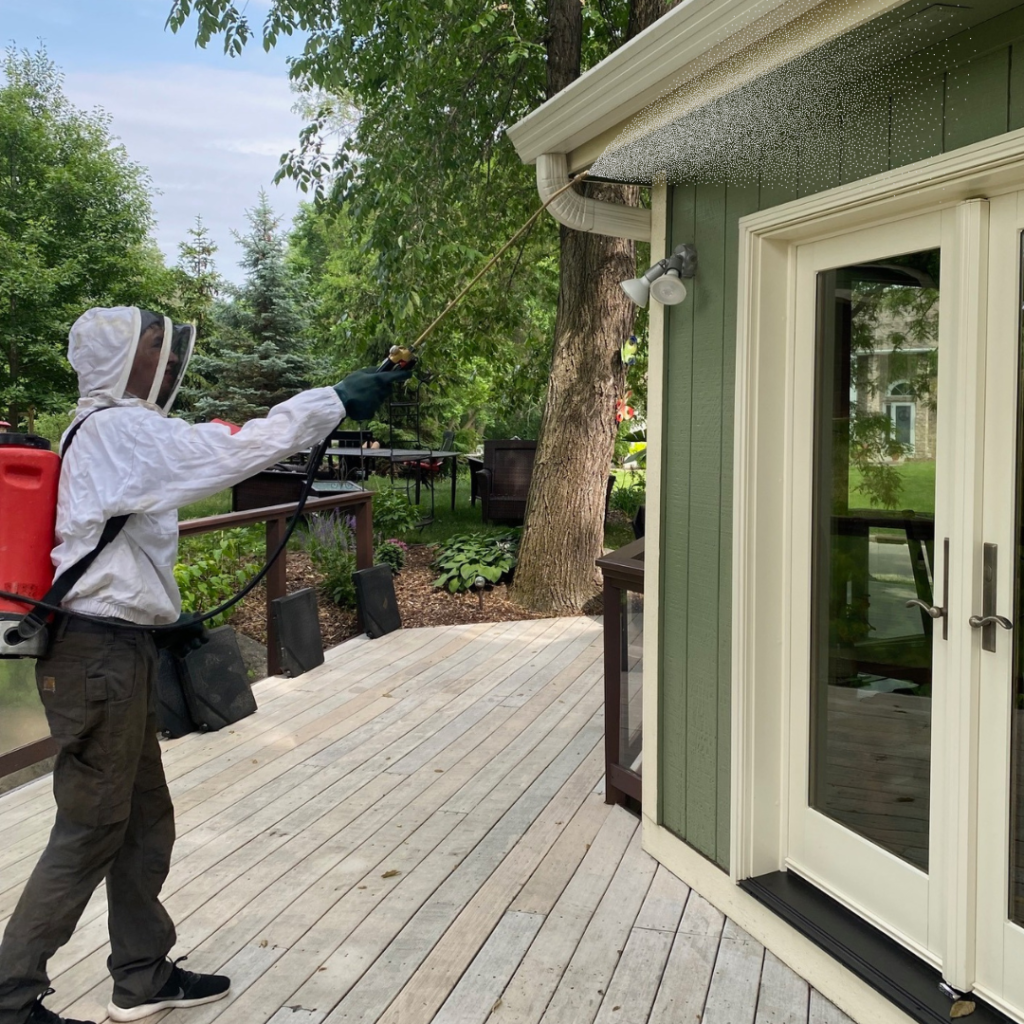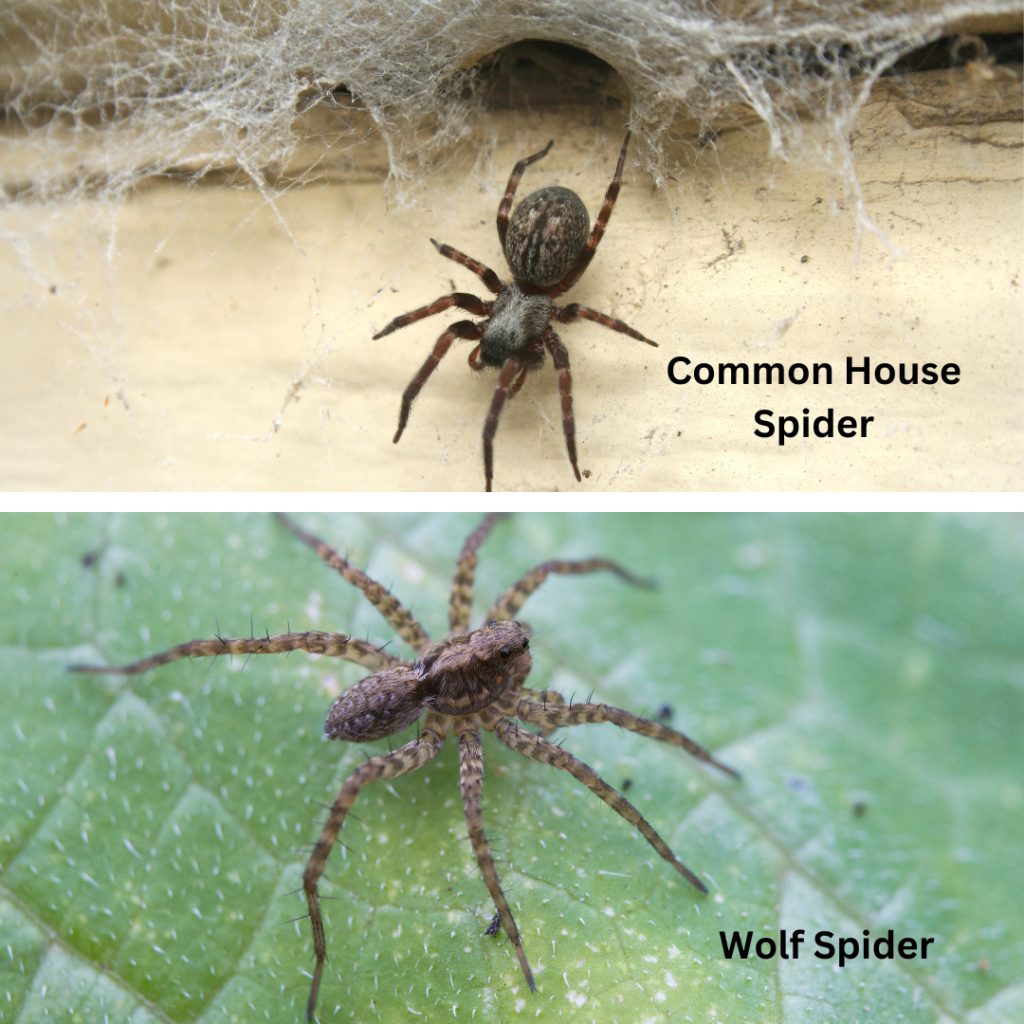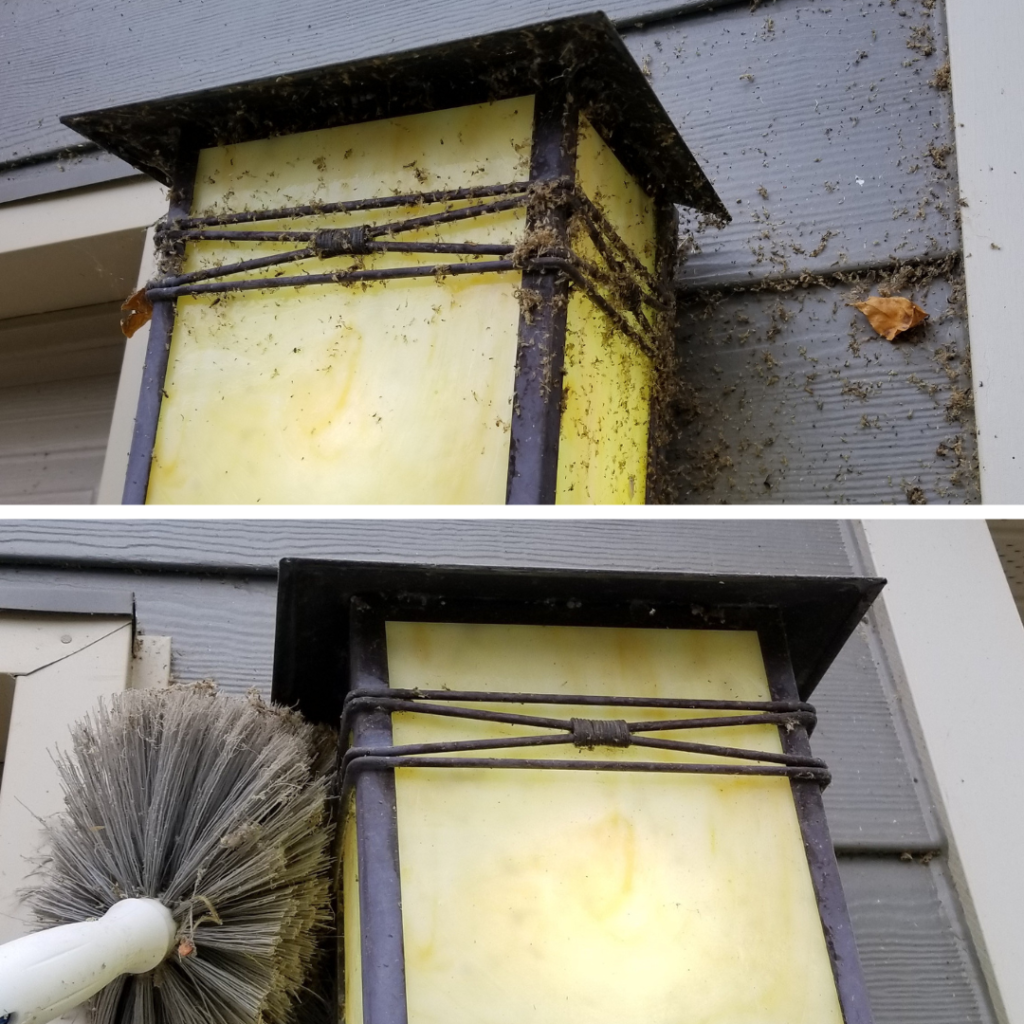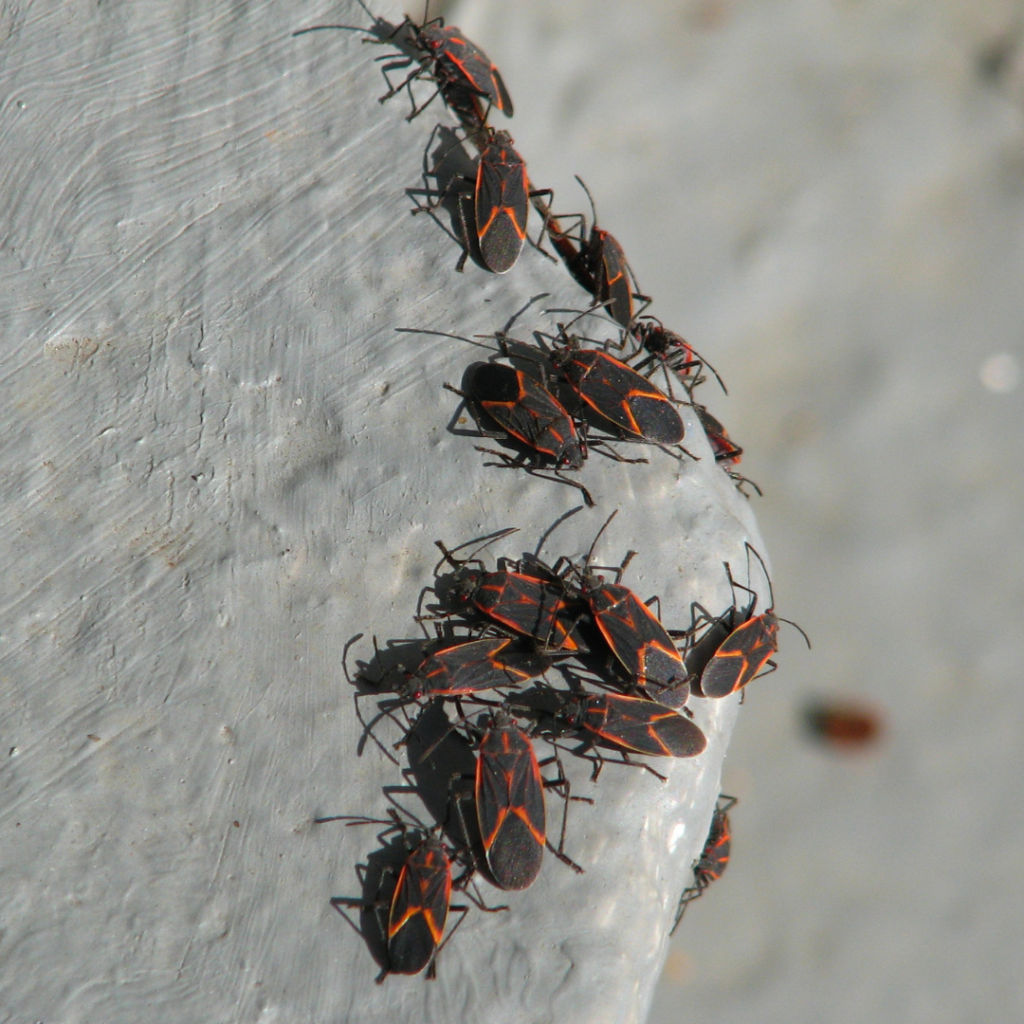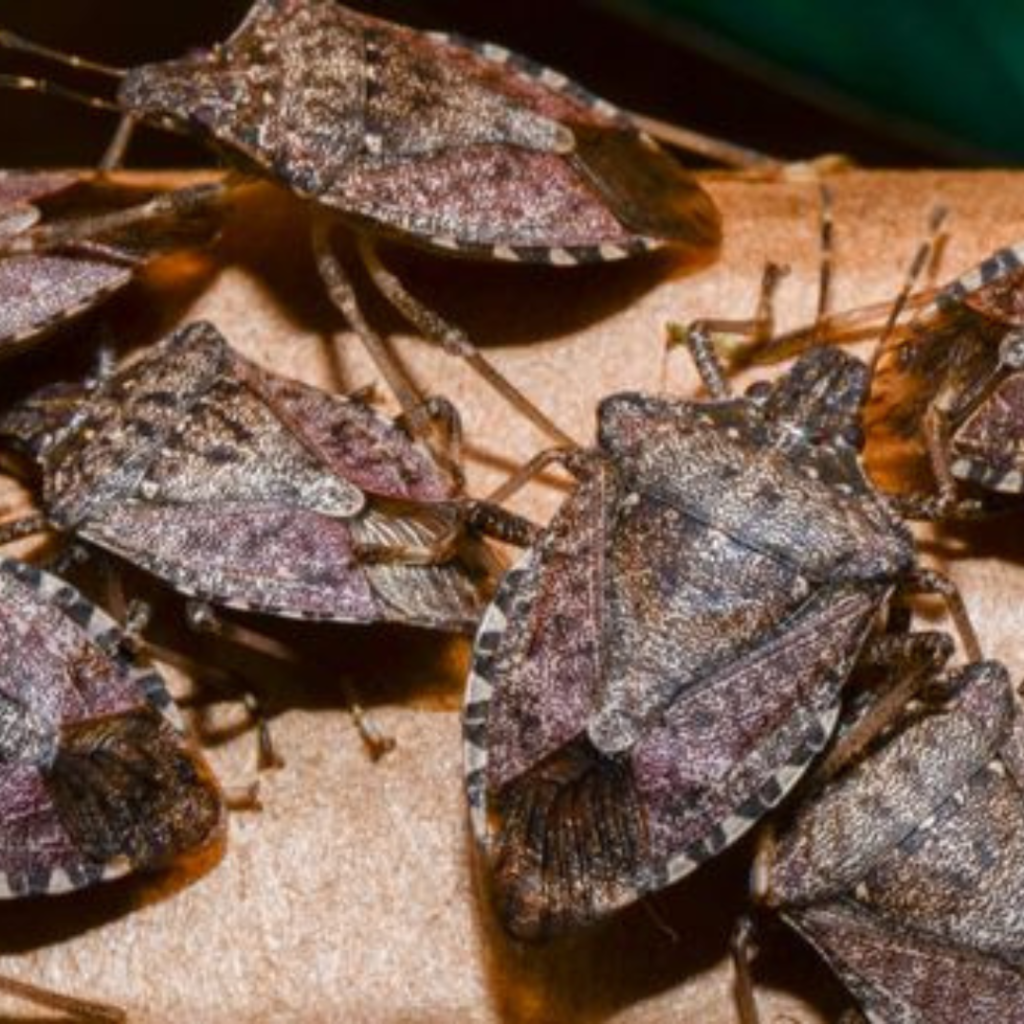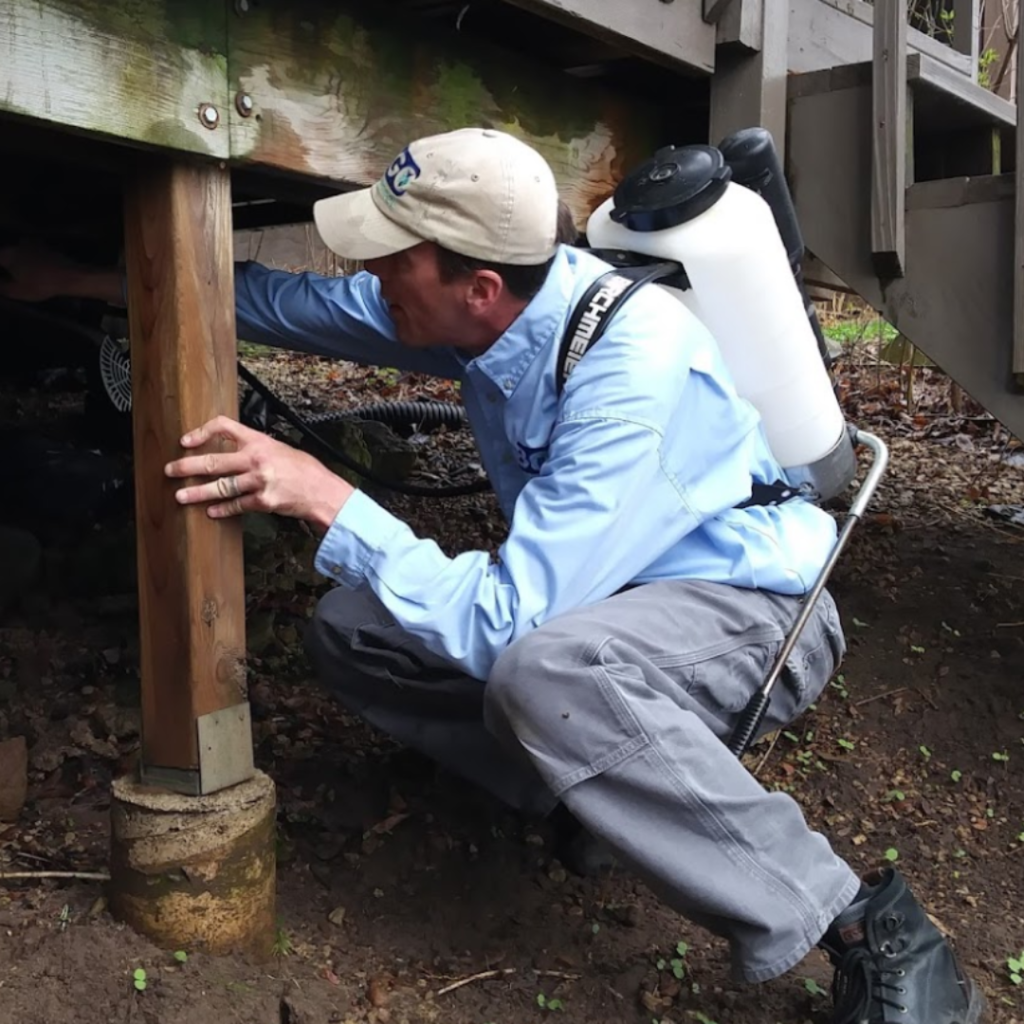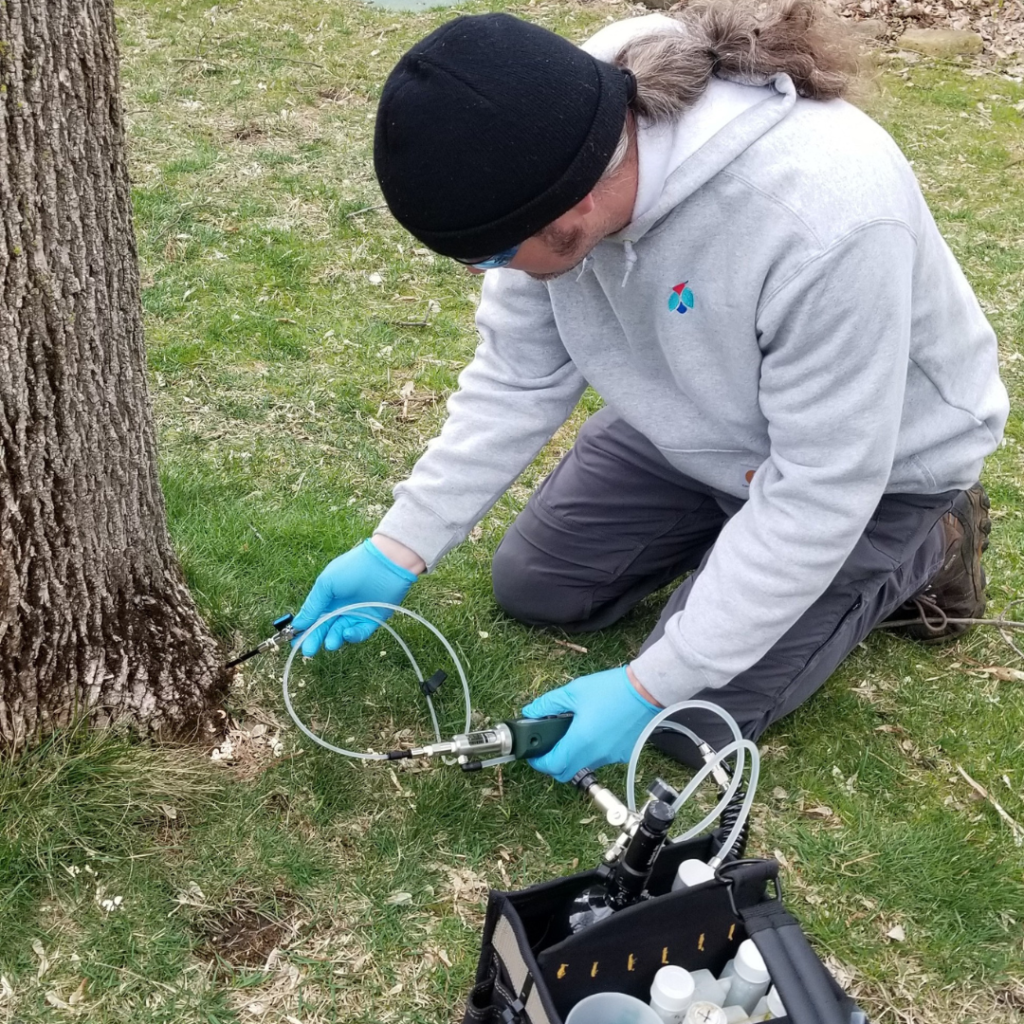Contact BOGO For Your Anoka Minnesota Pest Control Needs.
Anoka is home to the beautiful and historic Rum River and the Mississippi River. Both rivers meet each other in Anoka and are surrounded by protected forests and waterfront. This habitat increases pest activity in the surrounding areas.
These are the most common pests found in Anoka Minnesota
(Click on the names to keep from scrolling)
To protect your home from all these insects and more our Insect Prevention Plan or IPP is the best option
If you have any questions or concerns or would like to schedule an appointment call us or send us an email
Call Us Today! 952-404-BOGO (2646)
Share This Page!
Ants in Anoka Minnesota
Carpenter Ants
Male and female carpenter ants both have wings while worker carpenter ants do not. The males and females mate in the summer in nuptial flight. After mating the males die and the females fly to locate a place to build a carpenter ant colony. Winged carpenter ants are often misidentified as winged termites. In Minnesota, it is rare to find termites living this far north. If there are termites they were brought from other states. Some key differences between winged termites and winged carpenter ants include their body shape, antennas, and wings. A termite’s body is rectangular shaped and a carpenter ant’s body is shaped unevenly like an “8”. The wings of a termite are also not the same size as those of a winged carpenter ant. A termite’s antennas are shorter and not elbowed like a carpenter ant.
Pavement Ants
Pavement ants are extremely common in Anoka Minnesota. They have brown or black colored bodies They are smaller ants than carpenter ants measuring around 0.10 inches in length. A carpenter ant can vary between 0.25-0.5 inches in length. They are very common to see here in Minnesota and will forage for any foods that contain sugar and protein. They can sometimes be found still foraging for food even in the middle of the winter. They build nests inside homes that allow them to stay active inside. A few areas that let them survive in the winter include; under heated floors, inside insulated foundations, and under cement slabs. When outdoors their nests are often found under sidewalks, driveways, and patios. Their nests are always easy to locate as piles of sand and dirt are always visible above the ground.
Ant Service
In Anoka, our ant service uses products that are only available to licensed pest control technicians. The products are designed to affect the entire colony and not just the 10% of the colony that leaves the nest. The product when used inside is a foam that fills into cracks and crevices that the ants are crawling out of. After an ant crosses over the product they don’t die on contact like over-the-counter ant products do. They stay alive long enough to bring the product back into the nest to spread it across the rest of the colony. The exterior service works similarly but is applied across the entire foundation. The product comes out as a water-based substance and sticks to the surface for 2 months. Any ant that crosses over the sprayed areas will bring it back to the nests that are outside.
Click below to learn more about our ant service
To learn more about ants visit our ant identification page
Mice in Anoka Minnesota
Behavior
Mice living in Anoka Minnesota are at the mercy of the changing outdoor temperatures. Their behavior changes in the fall and winter when the temperatures start to drop. They start searching for insulated areas to build nests. Mice don’t hibernate in the winter so they will continue to stay active and need to eat and search for food. They will spend more time inside their homes but will also still leave their nests to find food outside. Most mice live in groups of multiple females, their offspring, and 1 or 2 males. They forage and hoard food to help the entire group. When outside they use scent trails to mark their group’s territory and to help them find their way back to their nests. Scent trails over time can turn into rub marks that show where on the house the mice are the most active. Once inside they build tunnels through the insulation to store their food and to keep their offspring protected from the cold temperature and outdoor predators.
Mouse Service
There isn’t a pest control company in Anoka Minnesota with a mouse service like BOGO pest control. Most companies aren’t honest with their customers about how to fix their home’s mouse problem. They sign their customers into yearly contracts that consist of placing poison inside the home. But that doesn’t stop the mice from getting inside. They are still getting inside to eat the poison and are now dying behind walls or in the foundation. This can result in a strong stench spreading throughout the house. Our service is designed to stop all mice from getting inside and do this without poison and without signing any contracts. We use mouse-proof materials to seal all the entry points on the exterior of the home. We stand by our service by offering a 2-year or 2-visit 2-year warranty. These warranties are hard to come by in the pest control industry. They give our customers the satisfaction that if any mice make their way back inside their home they can call us to service the home for free for 2 years.
Click below to learn more about our signature mouse service
To learn more about mice and their behavior visit our mouse identification page
Wasps in Anoka Minnesota
Paper Wasps
Paper wasps have been nicknamed the umbrella wasp based on their uniquely shaped nests. They are rounded, flat, and have hexagonally shaped cells visible from the outside. These cells are where the queen lays her eggs and where the larvae stay in cocoons before becoming a worker wasps. Each nest is built from scratch each spring and any old nests will not be reused. By the end of the summer, one paper wasp nest can have between 30-70 workers living in it.
Bald-Faced Hornets
Bald-faced hornets received their names from their white faces. They also have white stripes on their abdomens. The hornets build aerial nests that are at least 3 feet off the ground. The nests are tear-dropped shaped which is larger on the top and narrows on the bottom where the entrance is located. Each nest is built from scratch each spring. By the end of the summer, the nest can have between 400-700 workers living inside.
Wasp Service
We offer two separate wasp services in Anoka Minnesota. One service is a proactive treatment to keep wasps from building nests on the exterior of the home. We use a product that kills any wasp or insect that lands on the sprayed areas instantly. During this service, we spray soffits, corners, window frames, door frames, and anywhere that will keep wasp nests dry when it rains. The second service we offer is to exterminate any already-built wasp nests. During this service, we use a product that keeps the wasps that leave the nest alive long enough to spread throughout the rest of the wasp colony.
Click below to learn more about our wasp service
To learn more about wasps and bees visit our identification page
Spiders in Anoka Minnesota
Spider Behavior
Spiders aren’t insects. Insects have 6 legs while spiders have 8. Spiders are classified as arthropods. This name plays into the word arachnophobia. This defines people who have a strong fear of spiders. People like this should know that spiders play an important role in Anoka Minnesota’s ecosystems. They hunt and catch insects that would otherwise become overpopulated. Many of the insects they eat destroy crops, kill plants and spread diseases. The two different spiders that live in Anoka Minnesota are web-building spiders and hunting spiders. The most common web-building spiders are; the common house spider, daddy longlegs (aka harvestmen spider), and cellar spider. The most common hunting spiders are; the wolf spider, sac spider, and jumping spider.
Spider Habitat
Because spiders survive by eating other insects they thrive in areas with high insect populations. In Anoka Minnesota, there are numerous bodies of water. Whether it’s a swamp, lake, river, or marsh these areas attract insects of all shapes and sizes. Some of the most popular include mosquitos, ticks, flies, and moths. It’s a no-brainer that spiders that eat insects will also be attracted to living in habitats near bodies of water. With this same logic, spiders also thrive in areas with thick vegetation including long grasses and wooded habitats. Any homes built near a body of water or wooded area will see an increase in spider and insect activity.
Spider Service
Our spider service in Anoka Minnesota is focused on the exterior of the home. We start each service by knocking down as many spider webs as we can (we are limited to the length of our brush wands). Many of these webs have spider egg sacs inside them. Each egg sac when hatched can release hundreds of baby spiders. By knocking down the webs it will also force the adult spiders to start to move around. Most spiders stay in one place for long periods. By getting them to move around they will be more likely to cross over the product. The product we use sticks to the home and stays effective for 2 months. After two months it is highly recommended to treat again if a home is near a body of water or wooded habitat.
Click below to learn about our spider service
To learn more about spiders read our blog “We Love Living Near Woods and Water and so do Spiders!”
Boxelder Bugs and Stink Bugs in Anoka Minnesota
Boxelder Bugs
Boxelder bugs are fall and winter pests in Anoka Minnesota. In the fall they start to fly toward buildings and homes to search for places to overwinter. They are often seen on the south-facing walls where they can soak up the sun before winter. In the winter the bugs that made their way inside will start to become active on sunnier winter days. The sun warms them up enough for them to wake up from their frozen state and start to crawl toward doors and windows that are radiating heat. In the winter none of the boxelders are laying eggs or mating inside the home. They mate in the spring and summer and lay eggs on female boxelder trees. The young larvae grow into nymphs and eventually adults by feeding on the fluids found inside the tree’s helicopter seeds.
Stink Bugs
Stink bugs were rumored to be brought to America by hitchhiking inside shipping containers from Asia. They were first seen in Anoka Minnesota around 2010. Since then they have become a huge nuisance pest in the fall and winter. In the fall they start searching for places to over winter. They find their way inside homes through chimneys, soffits, soffits, vents, around windows, and cracks in the siding. They become more active in the winter on sunny days when the sun warms their bodies up enough to move around. They don’t mate or lay eggs inside in the winter. They start breeding in the spring. They lay their eggs on various leaves of plants. Some of the most common plants include; sweet corn, tomatoes, grapes, berries, and apples.
Boxelder and Stink Bug Service
Our boxelder and stink bug service is done in the fall. Because both insects are great flyers they can find their way inside multiple different entry points. Because of this, we have to cover the exterior of the home. Once the product dries on the home it sticks to the sprayed areas and stays effective for 2 months. For those 2 months, the product will kill any insects in 30-45 minutes after landing on the sprayed areas. The service becomes significantly more effective if done before any boxelder or stink bugs are seen on the house. When they are already swarming on the home some bugs have already made their way inside for winter.
Click below to learn more about our boxelder and stink bug service
To learn more about boxelder bugs and stink bugs read our blog “Minnesota Fall Pests”
Ash Tree Service in Anoka Minnesota
Emerald Ash Borer Behavior
The emerald ash borer is infecting trees all across Anoka Minnesota. They lay their eggs on the bark of ash trees. When their eggs hatch their larvae feed on the wood directly below the bark. The layer they live in is called the cambium layer. As they feed they hurt the tree so that it can no longer bring water and nutrients up to all the leaves and branches. The canopy of the tree is the first to start dying. Eventually, very sick trees will start losing bark making the damage visible from the outside.
Ash Tree Treatment
The ash tree treatment we do for Anoka residents is called pneumatic micro-injection. It takes a little longer to complete than other treatment options but it’s very effective. Each injection is done one at a time. This helps make sure an equal amount of product is injected into each injection point. It also makes it possible for us to see that the tree takes up the product.
For more information about the emerald ash borer in Anoka Minnesota
Learn more about the benefits of treating your ash tree
To protect your home from all these insects and more our Insect Prevention Plan or IPP is the best option
BOGO Provides Pest Control Services For the Twin Cities and Beyond! Just a Few Cities We Service For Include;
Anoka|Apple Valley|Bloomington|Burnsville|Coon Rapids|Champlin|Chanhassen|Deephaven| Delano|Eagan|Eden Prairie|Edina|Elk River|Excelsior|Golden Valley|Independence|Lino Lakes|Long Lake|Maple Grove|Maple Plain|Medina|Minneapolis| Minnetonka|Minnetrista|Mound|New Brighton|North Oaks|Orono|Prior Lake|Plymouth|Ramsey|Rogers|Shoreview| Shorewood|Stillwater|St. Louis Park|St. Paul|Victoria|White Bear Lake| Wayzata|Woodbury|
If you have any questions or concerns or would like to schedule an appointment call us or send us an email
Call Us Today! 952-404-BOGO (2646)



